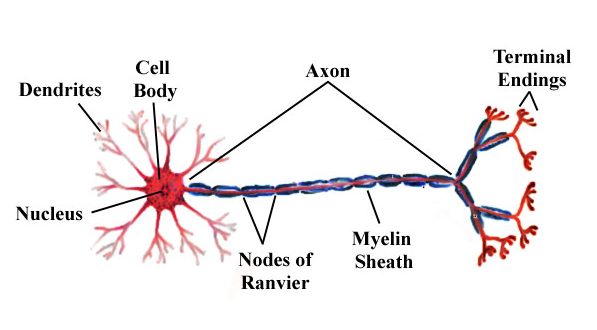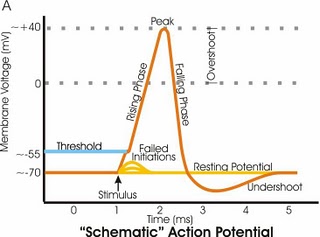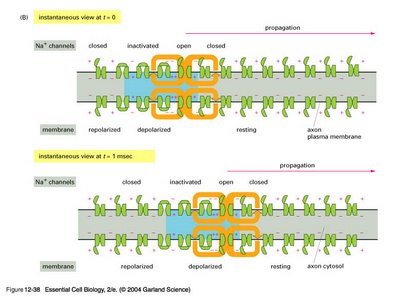The neuronal network in human brains is complex and vital to our existence. The occipital lobe specifically processes visual information and allows people to see. To visualize the function of the occipital lobe, a general model of neurons was attempted to be created using Python OpenGL. At first, starting with the basic interaction action potential firing through a neuron's axon, and lator forming a whole neuron. Once that is established, a comlete network of neurons can be produced to resemble the occipital lobe of the brain. Ideally, a neuronal reaction was going to be created to illustrate the neuronal pathway of the human reaction to, for example, a bright flash. This project incorporated geometrical and mathematical principles in order to build the model. In the future, a program can be created that will demonstrate these neuronal pathways to various human reactions once there is a general, working model of firing neurons.
The human brain is composed of four lobes (occipital, parietal, frontal, and temporal), each of which serves specific functions and controls different areas of the body [3]. A closer look deep inside the occipital lobe reveals the neurons, the basic building blocks of our nervous system. In order to understand the interactions between neurons, however, it is necessary to understand the components of one. Figure 1 shows a great representation of the few parts that a neuron is composed of - the dendrites, cell body, axon, and axon terminals. The main function of the dendrites is to receive chemical information from neurotansmitters, chemicals such as dopamine and acetylcholine, from the axon terminal of another neuron [1]. The cell body's function is to then analyze how much information is given, and if the amount crosses the threshold the cell body fires an action potential down the axon [1]. The axon carries an action potential signal down to the next neuron that will be receiving the neurotransmitters in a synapse that it forms with the axon terminal [1].

Therefore, the way that neurons interact with each other, transmit information, and control bodily functions is through a chemical reaction followed by an electrical signal process known as action potential. While the neuron cell is at it's resting potential (at about -70mV), it is constantly receiving weak chemical information from other neurons, but only when these signals push the cell's states over the threshold (about -55mV) will it fire an action potential. The graph in Figure 3 shows a neuron's action potential cycle with regard to how much membrane voltage it has [2].

Once the action potential is fired from the cell body, it travels down the axon to the axon terminal where it initiates the release of neurotransmitters [2]. Figure 4 is a visual representation of how an action potential works. When the cell is activated, it becomes depolarized as the action potential moves down the axon. More specifically, an voltage-gated ionic channel of the neuron opens, letting in positive ions such as Na+ and negative ions out such as Cl- , which initiates the opening of the next ionic channel until the signal reaches the axon terminal [2].

Once at the axon terminal, neurotransmitters are released into the synapse that is formed between the axon terminal and a dendrite from another neuron (Figure 5.). The dendrites of the receiving cell send neurotansmitter information to the cell body and the process starts over again. To transfer information, the first (postsynaptic cell) transmits neurtransmitters, chemical molecules such as Dopamine, into the synaptic cleft where the second cell absorbs and interprets them [1]. Once the cell body decided what to do, it either becomes deactivated or sends an action potential signal to some other neuron [2].

The project starts by creating one of these neurons and applying the action potential change when a signal passes from one neuron to another [2]. Since the action potential is formed when a neuron cell gets activated, and the negative charged ions inside the cell are replaced by the positive charged ions outside of the cell [2], we can show this change by assigning colors, for instance red for negative and green for positive. As this action potential runs through the axon, a long tube-like structure of the cell [1], it reaches a synapse that the axon has created with the dendrites of another cell. The cell then transfers information by transmitting neurtransmitters into the synaptic cleft where the second cell absorbs and interprets them. Once the next cell body decides what to do, it either becomes deactivated or sends another action potential signal to some other neuron. The project focuses on representing this cycle change visually.
Although the project was not completed, there were two versions created, using Python OpenGL, in an attempt to replicate the action potential signal down the axon. The first version included the axon, with red on the inside depicting the negative state of the axon and green on the outside showing the positive surrounding atmosphere. A loop was then created that changed the inside of the axon from red to green as the action potential moves down. However, a problem occured because the time function did not work inside the loop in order to slow it down and show the change in action potential. A second attempt was based another student's generation method in order to try and produce a visibly changing action potential. However, this also did not completely go through since I was able tocreate only one line of changing potential using the single array rather than a coordinate system. Given more time though, the glitches in the problems faced with could be fixed to create a final result of an action potential going down the axon.
In conclusion, this experience wih progamming has left me intrigued by its complexities. I always visualized programming as a bit boring and tidious, but I did not realize the big role that mathematics plays in it and I really enjoy mathematics. Going from zero exposure to any kind of programming to where I got to now was a challenge this semester, but a very interesting one. Everytime I worked on my project, hours went by without me even noticing because I really wanted to solve the problems of my program. It is frustrating that I did not get a final result in the end, but now I have enough background to keep working on my project and learning more about programming on my own.
[1] \bibitem{GOLI} R. Goli. The Structure and Function of Neurons. Jun 18, 2009. http://www.suite101.com/content/the-structure-and-function-of-neurons-a126011.
[2] \bibitem{POTENTIAL} Lights, Camera, Action Potential. http://faculty.washington.edu/chudler/ap.html.
[3] \bibitem{CHERRY} K. Cherry. The Anatomy of the Brain. p2. http://psychology.about.com/od/biopsychology/ss/brainstructure_2.htm.